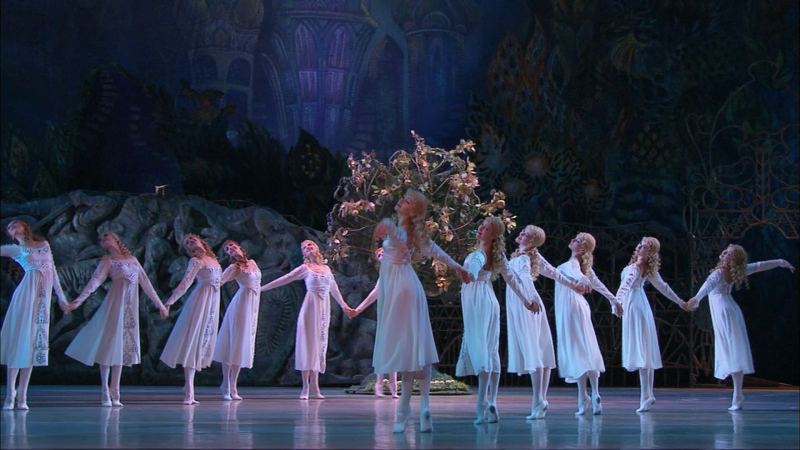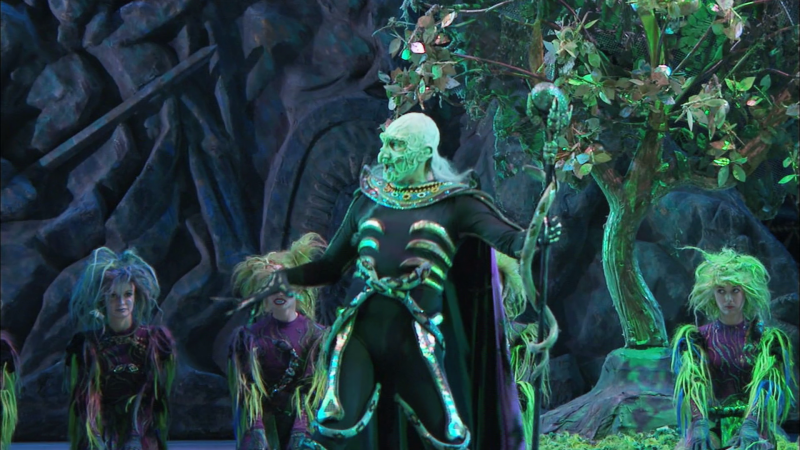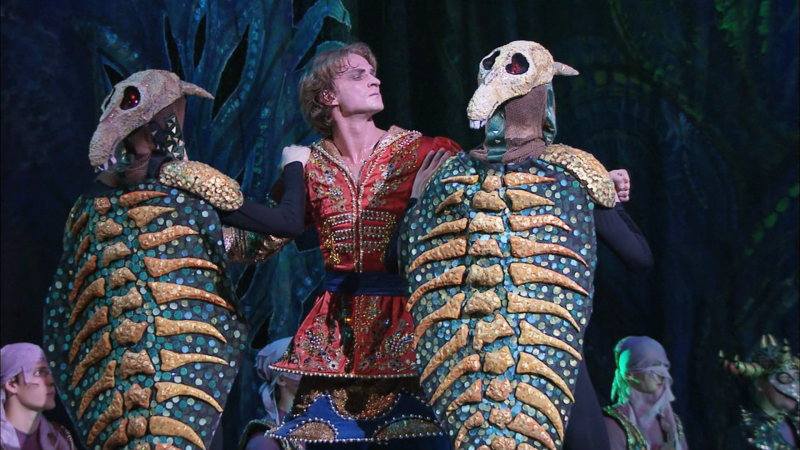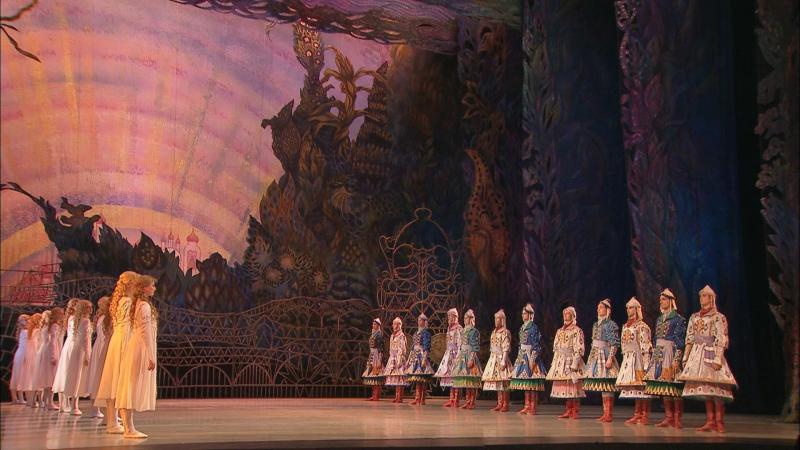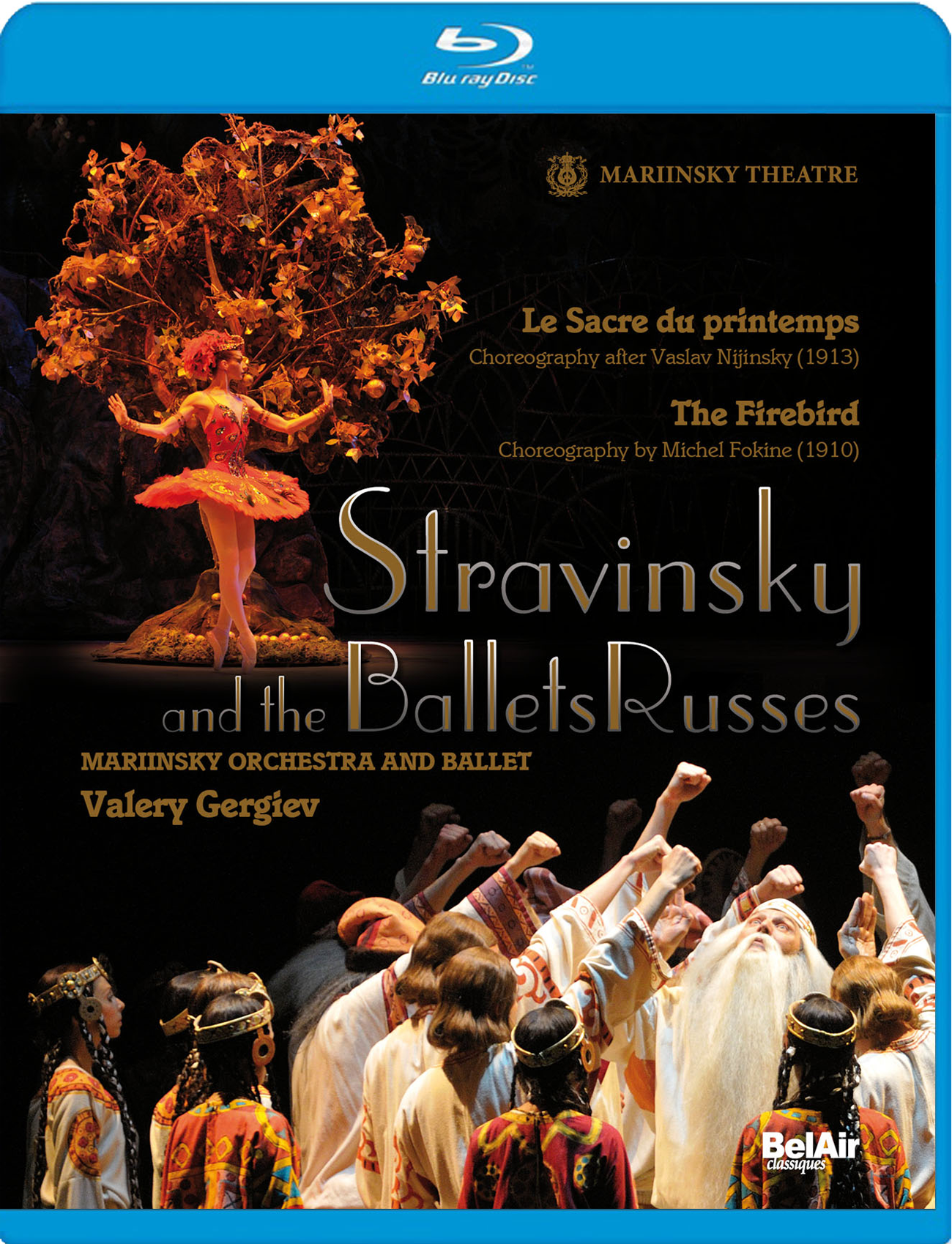
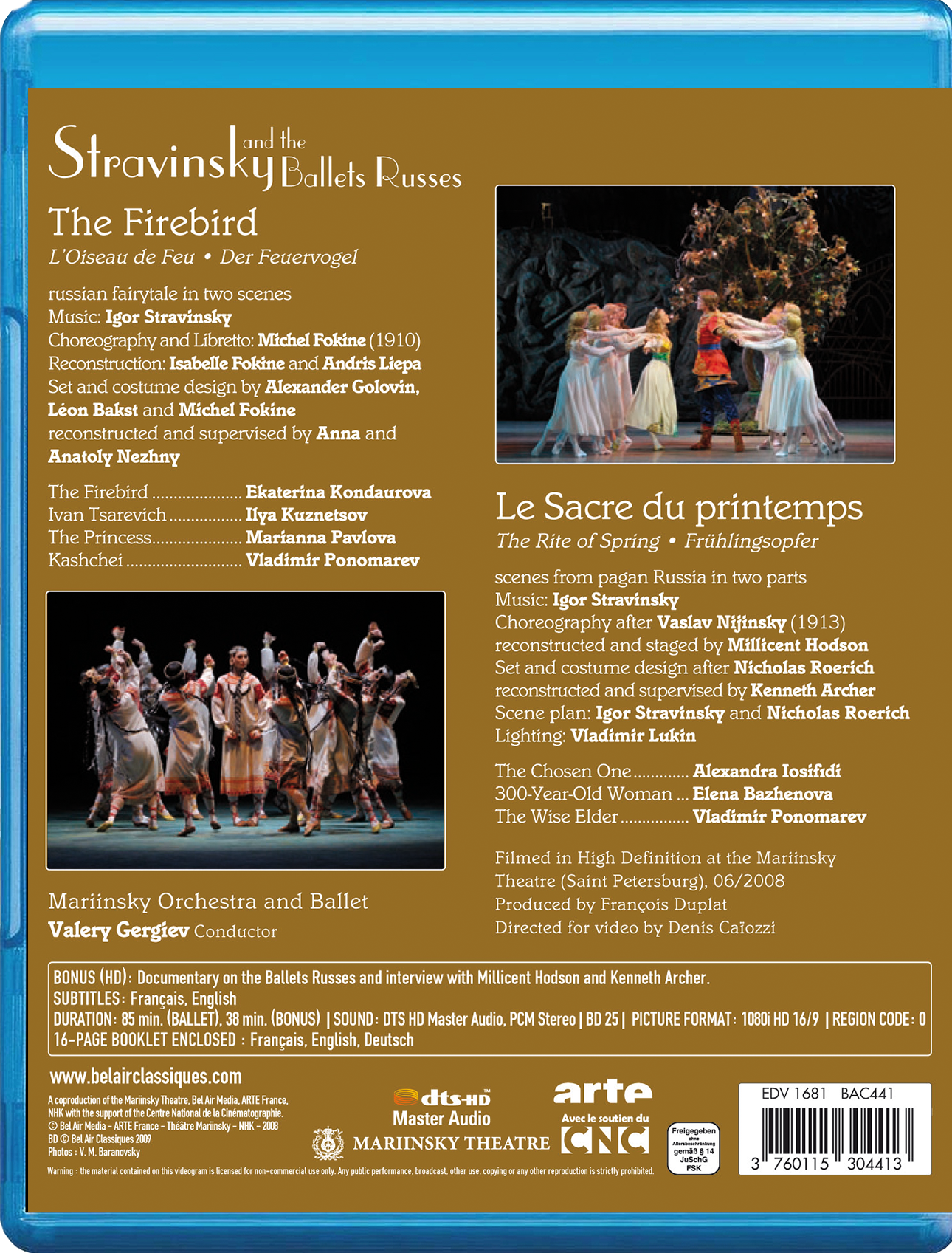
Stravinsky and the Ballets Russes. In 2008 the ballet troupe of the Mariinsky Theater in Saint Petersburg presented The Firebird and The Rite of Spring in celebration of the 1909 debut of the Ballets Russes in Paris. Special efforts attempt to recreate both works as they were originally performed by the Ballets Russes. Valery Gergiev conducts the Mariinsky Orchestra:
The Firebird stars Ekaterina Kondaurova (The Firebird), Ilya Kuznetsov (Ivan Tsarevich), Marianna Pavlova (The Princess), and Vladimir Ponomarev. Choreography and libretto by Michel Fokine (1910) as reconstructed by Isabelle Fokine and Andris Liepa; set and costume design by Anna and Anatoly Nozhny after original designs of Alexander Golovin, Léon Bakst, and Michel Fokine.
The Rite of Spring stars Alexandra Iosifidi (The Chosen One), Elena Bazhenova (300-Year-Old Woman), and Vladimir Ponomarev (Wise Elder). Choreography after Vaslav Nijinsky (1913), reconstructed and staged by Millicent Hodson; set and costume design by Nicholas Roerich, reconstructed by Kenneth Archer; scene plan by Igor Stravinsky and Nicholas Roerich; lighting by Vladimir Lukin.
Both shows directed for TV by Denis Caïozzi and produced by François Duplat. Released 2009, disc has 5.1 dts-HD Master Audio sound. Grade B-
The Ballet Russes was the avant-garde ballet company promoted by Serge Diaghilev, mostly in western Europe, between 1909 to 1929. In 1910 ballet lovers were used to pieces like Swan Lake and Giselle. So try an experiment. Watch the "white acts" from those two popular works and immediately switch to The Rite of Spring. Maybe then you can get some understanding why The Rite of Spring was so controversial when it premiered.
Although the Ballet Russes shows were hugely influential, the shows didn’t run for long. We have no motion pictures of them. Knowledge about the choreography, the sets, and the costumes soon was scattered and eventually all but lost. There is a valuable bonus on the disc in which Millicent Hodson and Kenneth Archer describe their efforts to research the original productions and revive them.
The Firebird is a Russian fairy story about the mythical history of the Russian aristocracy, which I will loosely relate in my own words. Here the proto-tsar Ivan (Ilya Kuznetsov) catches the firebird (Ekaterina Kondaurova) in a magic forest. Ivan could have kept the firebird for a lover. But he released her. She in turn gave Ivan a feather and promised to come to his aid if he should hold it before him in the face of danger:
The firebird flew away. Soon Ivan encountered a proto-princess, the Great Beauty (Marianna Pavlova):
Who had 12 kid sisters:
All these girls were being held captive by Kashchei (Vladimir Ponomarev) an evil magician:
Soon Ivan is in deep trouble, and he flashes his feather:
Bringing Firebird to the rescue:
Our heroes break Kashchei's power by destroying his evil egg:
The 12 sisters are matched to 12 knights:
Ivan and the Great Beauty are married along with the 12 other couples, thereby founding the Russian royal state:
So what should we make of this version of The Firebird today? The music is still vital, but everything else about this production now seems naive and anachronistic. The set is dated, the costumes for the monsters look ridiculous, and the acting reminds us of the silent movies. We really can't know how authentic the dancing is. All we can assume is that the choreography depicts a good-faith and well-informed illustration of what the dancing may have looked like. But most puzzling thing is the disconnect between what seemed avant-garde in the theater in 1910 and what was actually going one the the world. The real Russian Tsar had already agreed to a Constitutional Monarchy. In just 8 more years, Vladimir Lenin (a real-world evil magician) would have 4 Romanov princesses (ages 16, 18, 20, and 23) shot in a prison because their father had been the last Tsar. The Firebird music is still popular. But the irrelevance of the libretto has limited the appeal of the ballet.
We turn our attention now to the Rite of Spring. Here are various groups from the village as the celebration of spring begins:
Pagan make-up:
The elder (Vladimir Ponomarev):
The maidens who are to participate this year in the selection games:
The Chosen One (Alexandra Iosifidi):
The Chosen One dances herself to death; or, more realistically perhaps, until she is too tired to resist the sacrifice:
The Rite of Spring is generally considered to be the most influential musical score of the 20th century. In contrast to the weak story of The Firebird, the theme of human sacrifice is timeless. Wikipedia states that as many as 150 important productions of the Rite have been mounted. One of the most famous of these was that of Pina Bausch at the Wuppertal Tanztheater. Here is an HDVD image from the Pina Bausch Rite of Spring as depicted in the Pina movie (the stage is covered with red dirt and so are the dancers):
For anyone specially interested in the history of ballet or the Ballet Russes phenomenon, subject title is a must-have disc. Others might not want to watch this repeatedly because the designs are so dated. So I start with a B grade. The orchestra performance and the sound recording is good. But this title was shot in 2008 when HD video was still new. Video resolution is a bit soft, and I think the color balance is poor. So I wind up with the grade of B-.
OR



